How to make mayonnaise in less than 10 minutes! Using whole eggs instead of just the yolk, makes this homemade mayonnaise recipe practically fail-proof and extra easy.

I’ve used this mayonnaise recipe more times than I can count. If you’ve never tried homemade mayonnaise, you are in for a treat. Homemade mayo is ultra creamy and much more flavorful than anything you can buy at the store. This recipe calls for a simple list of ingredients and takes less than 10 minutes to make!
Homemade mayo lasts about two weeks in the fridge, but in all honesty, once I have a batch in my fridge, it usually goes quicker than that. I love using it to make sandwiches like egg salad or chicken salad, and I find it makes creamy salads like potato salad and shrimp salad extra special.
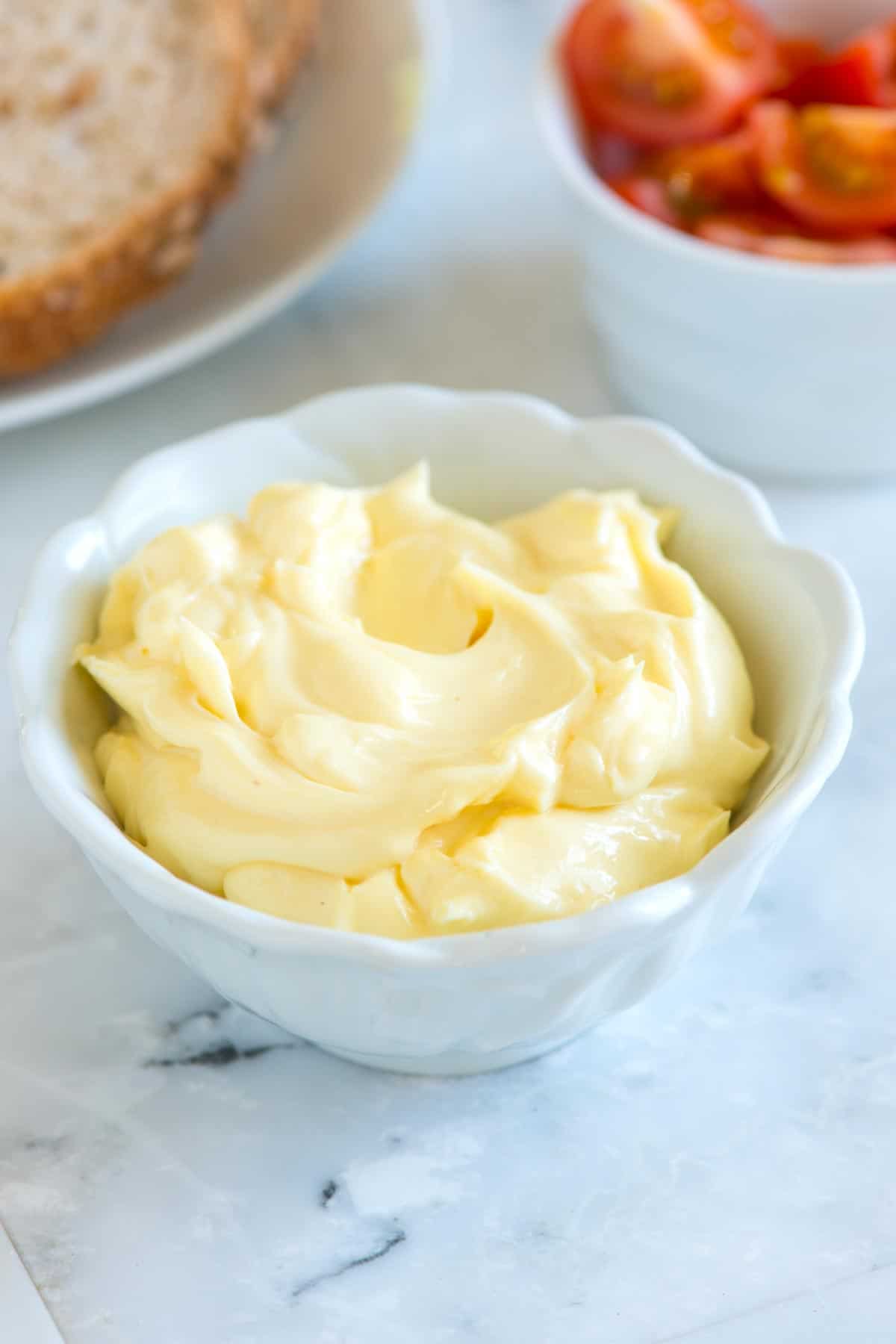
Key Ingredients
- Egg: You need to use egg to make mayonnaise. We do use raw egg in the recipe. For mayonnaise made without egg, see our vegan mayonnaise recipe. Personally, I don’t have an issue adding raw egg to the recipe, but if you are concerned about eating raw eggs, buy pasteurized eggs. They are sold in the egg section of the grocery store. You can also pasteurize eggs yourself, just search for a tutorial online.
- Mustard: I know that not everyone loves the flavor of mustard, but when it comes to making homemade mayonnaise mustard is sort of a magical ingredient. Mustard adds a bit of flavor, but it also helps to keep the mayonnaise stable. Along with the egg yolk, mustard helps emulsify the mixture, reducing the risk of our mayo breaking. If you aren’t a fan, you can reduce the amount called for in our recipe or leave it out (just remember it is one of the fail-safes we have added to our recipe to encourage an emulsification.)
- Vinegar or lemon juice: Not only does a little acid like wine vinegar, champagne vinegar, and lemon juice add incredible flavor to the mayonnaise, it also helps to stabilize the mixture.
- Neutral flavored oil: By neutral flavored oil, I mean use an oil that is light in flavor. Quite a bit of oil is added to make mayonnaise, so it’s important to like the flavor of the oil you use. I really like safflower oil or sunflower oil for mayonnaise. Vegetable oil or canola oil will work, too. Avocado oil works, but does add a slight flavor and seems to be more finicky. Since posting the recipe, quite a few readers have asked about olive oil in mayonnaise. You can use olive oil, but it can be a little overpowering so I prefer to use a brand that’s light and fruity. I think robust or spicy olive oils would be too much. You might also consider only replacing half of the oil called for in the recipe with olive oil and use something more neutral for the rest.
How to Make Mayonnaise
There are a few ways to make mayonnaise. We use our food processor with the small bowl attachment for the best results, but an immersion blender or making it by hand will also work. I have included a recipe for making mayo using an immersion blender below. For handmade mayo, you’ll need a whisk and a large bowl. Expect tired arms and strong biceps if you do it by hand.
- Prepare your food processor. I prefer to use the small bowl attachment that came with our food processor to make mayonnaise.
- Add an egg to the bowl of your food processor and process for about 20 seconds.
- Add mustard, vinegar, and salt then process for another 20 seconds.
- Slowly add the oil, in tiny drops, until about a quarter of the oil has been added. Adding the oil slowly is really important. If you were to dump it all in at once, you’d have mayonnaise soup!
- Taste the mayonnaise and adjust with additional salt and vinegar or lemon juice.
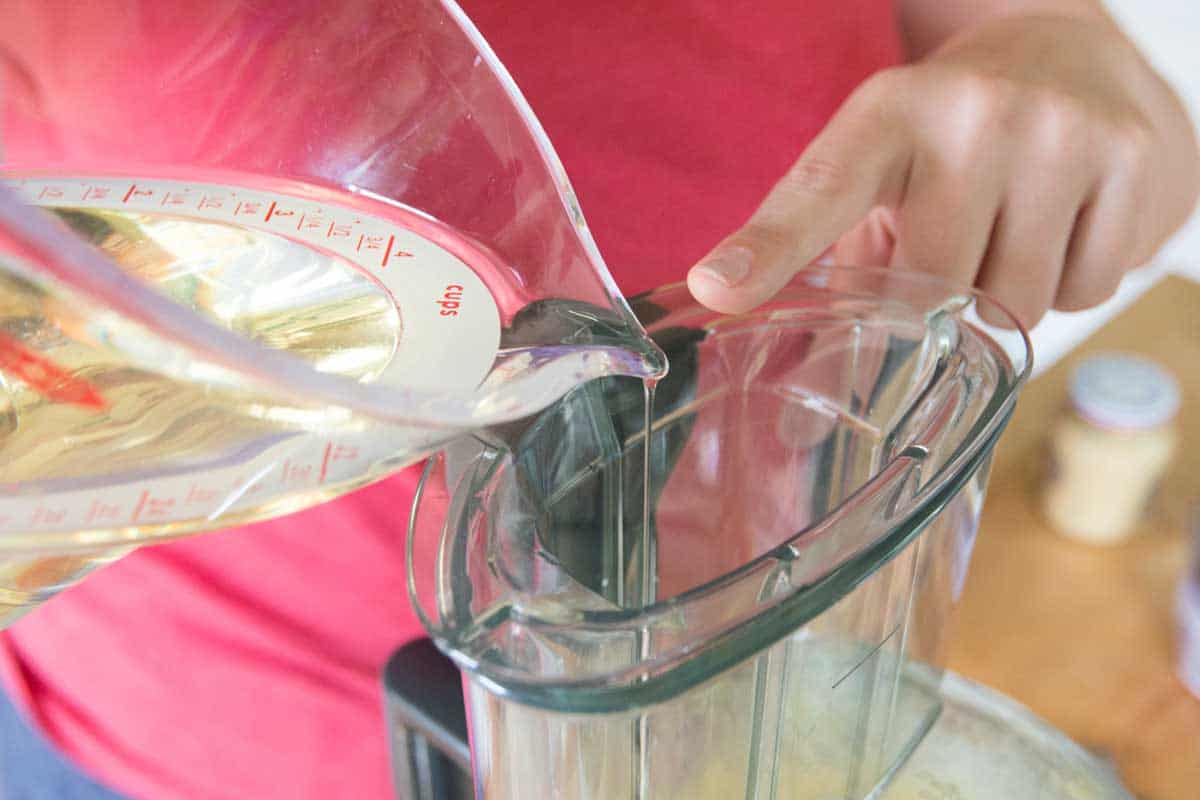
For the best mayonnaise, add the oil slowly very slowly. When the mayonnaise is done, it will be thick and creamy (as shown in the photos).
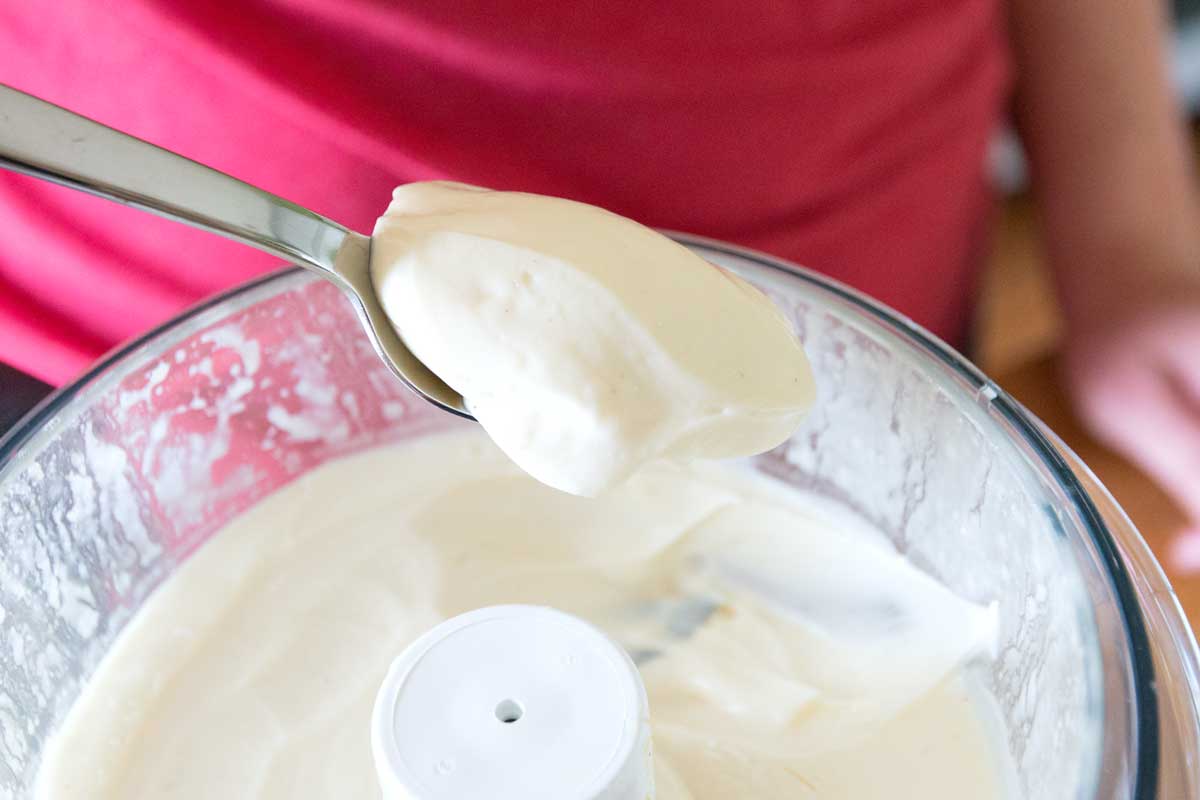
Delicious Ways to Use Homemade Mayonnaise
I love having a batch of this mayo in the fridge. It is absolutely perfect for making our simple egg salad, tuna salad, smashed chickpea salad, or this herby chicken salad, all of which are perfect for make-ahead lunches.
Homemade mayonnaise isn’t just for sandwiches! We love using it to make our potato salad, our creamy coleslaw, macaroni salad, or our broccoli salad. Adam also loves using homemade mayo to make his Maryland-style crab cakes, and I love it when he does!
Finally, you can turn mayo into creamy salad dressings! Try this homemade blue cheese dressing, this simple tartar sauce, homemade fry sauce, or my favorite ranch dressing.
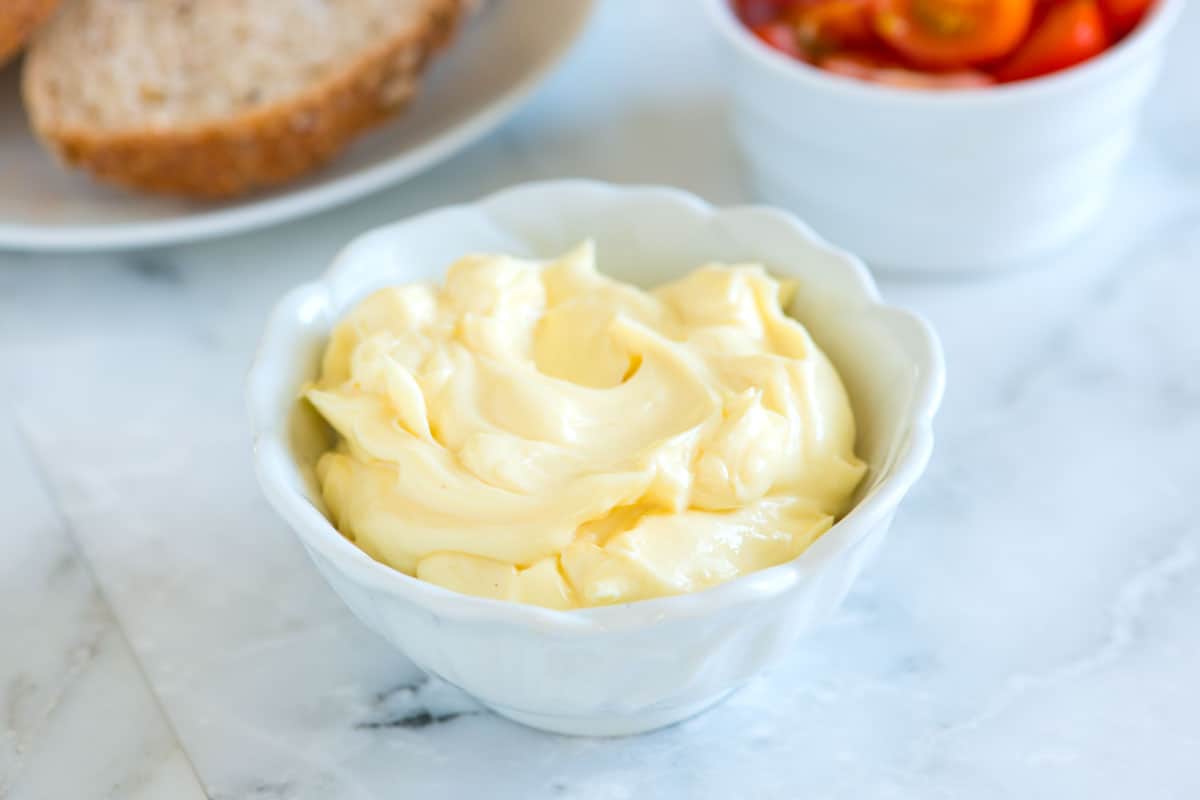
Fail-Proof Homemade Mayonnaise
- PREP
- TOTAL
Homemade mayonnaise is such a treat. It’s very simple to make, too. There are a few ways to make mayonnaise. My preferred methods are using our food processor with the small bowl attachment or an immersion blender with a tall jar. You can use a blender or make it completely by hand, but I don’t find them as fail-proof.
Watch Us Make the Recipe
You Will Need
1 large egg
1 tablespoon Dijon mustard
1 tablespoon red wine vinegar or white wine vinegar
1/4 teaspoon fine sea salt, or more to taste
1 cup (240ml) safflower oil or vegetable oil
1 teaspoon fresh lemon juice, optional
Directions
- Prepare Equipment
1If you have a large food processor, use the smaller bowl attachment that came with your processor so that the bowl is not too large for the amount of mayonnaise this recipe makes. Not using the smaller bowl can prevent the mayonnaise from emulsifying since the mixture will not have enough contact with the blade.
2If you do not have the smaller bowl attachment, I recommend making the mayonnaise with an immersion blender (method is shared below). You can also make a larger batch, double the recipe, and use the standard bowl attachment. I have had plenty of success using this recipe with a high-speed blender, but based on feedback from our readers, we have noticed that more issues pop up when a blender is used.
- Make Mayonnaise
1Add egg to the small bowl of a food processor and process for 20 seconds. Add the mustard, vinegar, and salt. Process for another 20 seconds.
2Scrape the sides and bottom of the bowl, turn the food processor on then begin to slowly add the oil in tiny drops until about a quarter of the oil has been added (this is critical for proper emulsification).
3When you notice that the mixture is beginning to thicken and emulsify, you can be a little less strict. With the processor on, continue to add it slowly, but increase to a very thin stream instead of drops of oil.
4When all of the oil has been added, scrape the bottom and sides of the bowl and process for an extra 10 seconds. Taste mayonnaise for seasoning then add salt, lemon juice or extra vinegar to taste.
5If the mayo seems too thin, slowly stream in more oil with the processor running until thick. If it is too thick, add a teaspoon or two of cold water.
- Immersion Blender Mayo (Alternate Method)
1An immersion blender makes this so quick! Add all of your mayonnaise ingredients (including the oil) to a tall jar, then turn on the immersion blender, slowly moving it up and around to incorporate the ingredients and blend into a thick mayo. Remove the blender, taste, and then add additional salt or lemon juice to taste.
Adam and Joanne's Tips
- Storing Homemade Mayonnaise: Store covered in the refrigerator up to 2 weeks.
- Raw eggs: When choosing eggs for homemade mayonnaise, go for fresh, properly refrigerated, clean pasteurized grade A or AA eggs with intact shells.
- Olive oil: Olive oil can be a little overpowering so use one that’s light and fruity and consider only replacing half of the oil called for in the recipe with olive oil and use something more neutral for the rest.
- Roasted garlic mayonnaise: Add 4 to 5 roasted garlic cloves to the mixture before blending. Here’s how to roast garlic. You might also enjoy our garlic aioli recipe, which is similar to this one but uses egg yolks and raw garlic instead of whole eggs and roasted garlic.
- Flavored mayo: Add fresh herbs, chipotle, Sriracha, or curry powder.
- Fixing Broken Mayonnaise: Transfer your broken mayo to a measuring jug, and clean the food processor bowl and blade. Add an egg yolk and 1/2 teaspoon of vinegar or lemon juice to the clean food processor bowl. Turn on to blend, and then slowly add the broken mayo, bit by bit, just as you did when you added the oil the first time.
- The nutrition facts provided below are estimates. One serving equals 1 tablespoon.
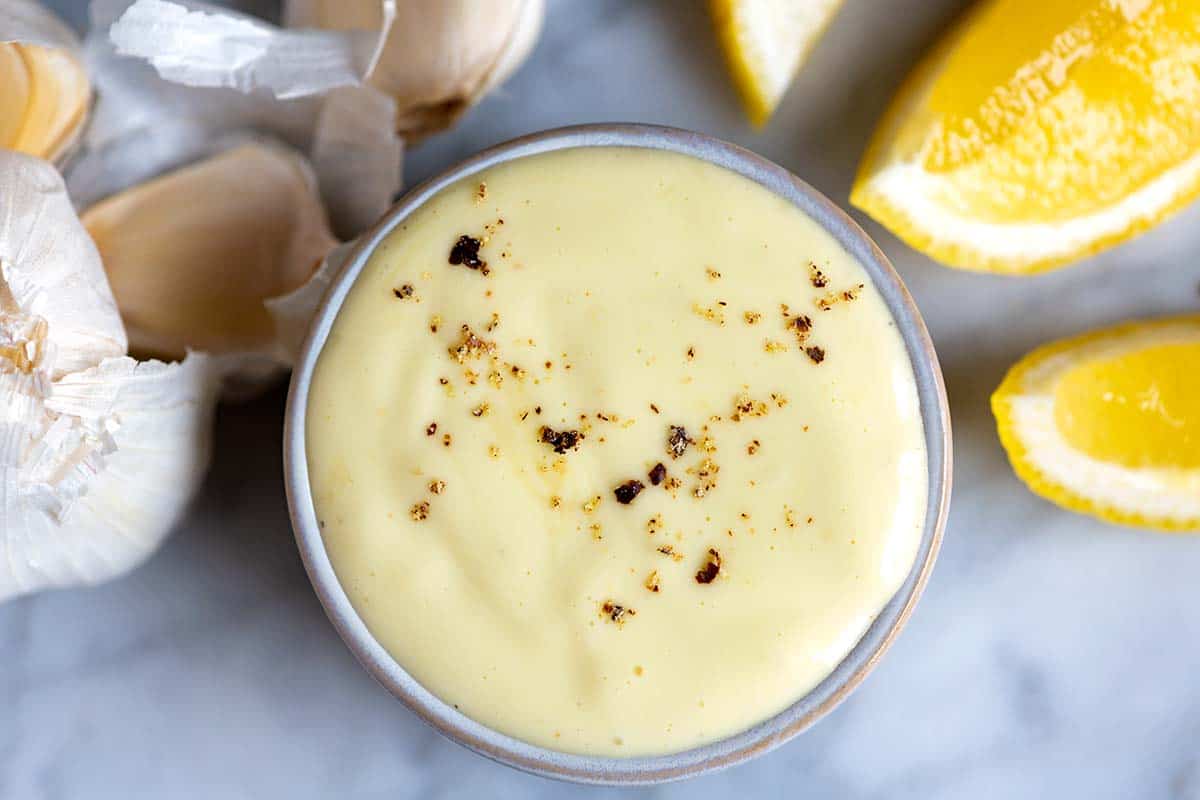
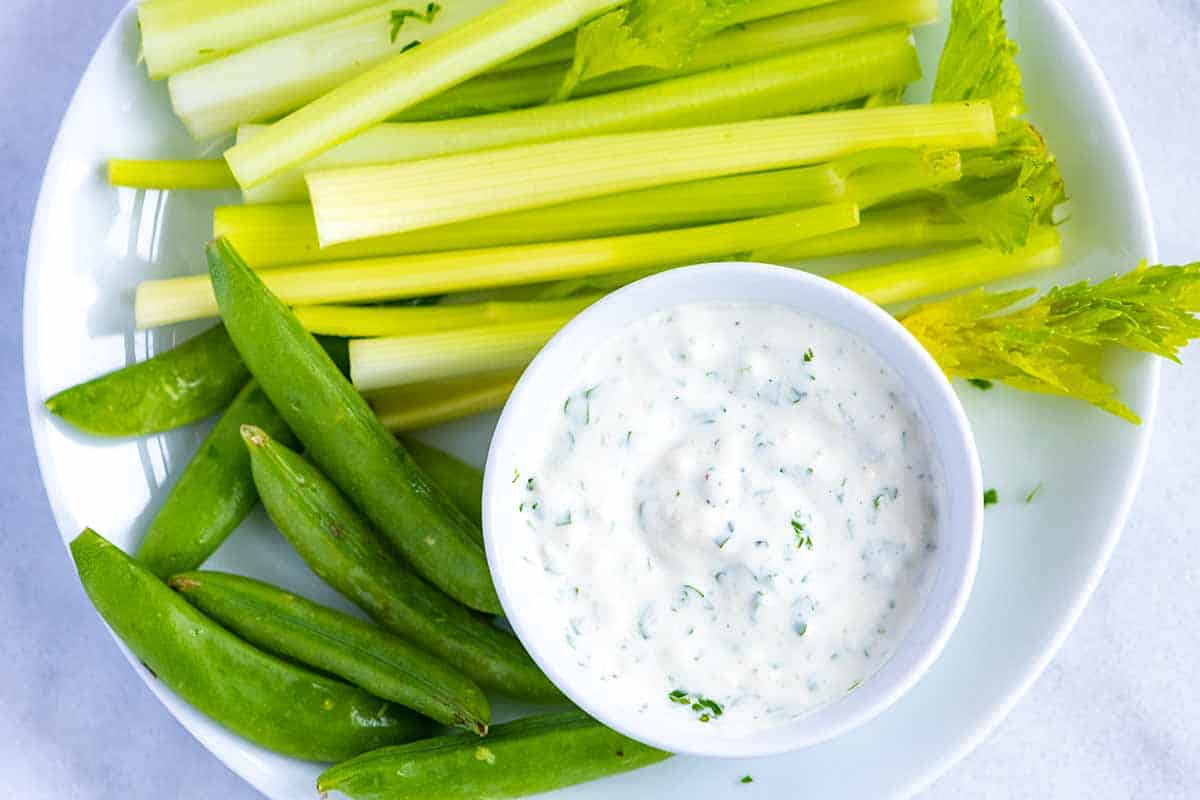
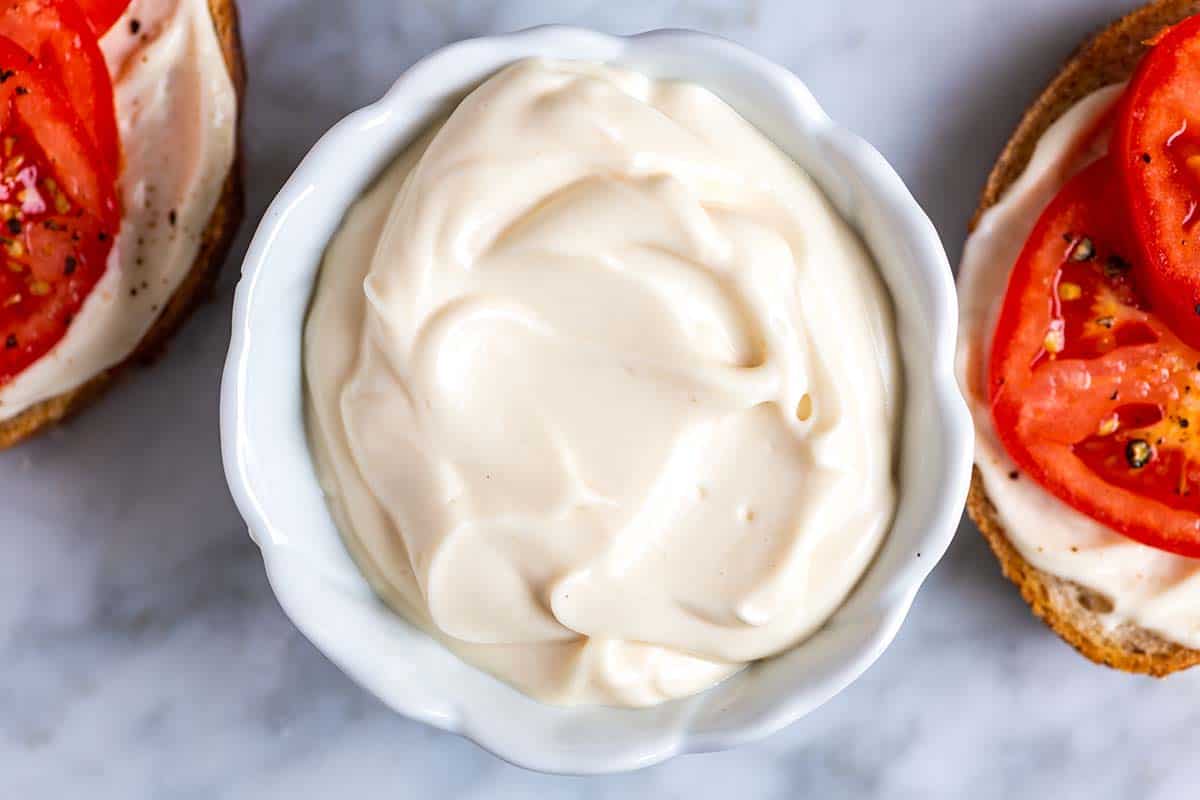
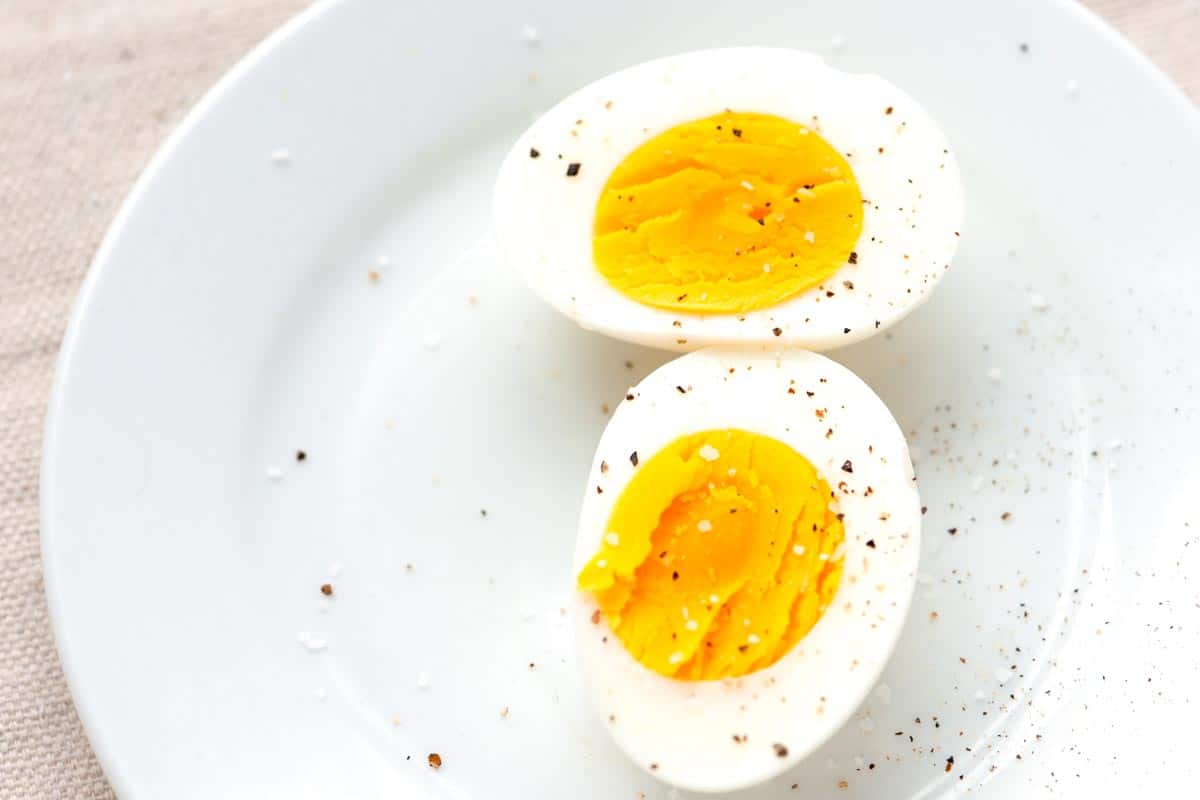
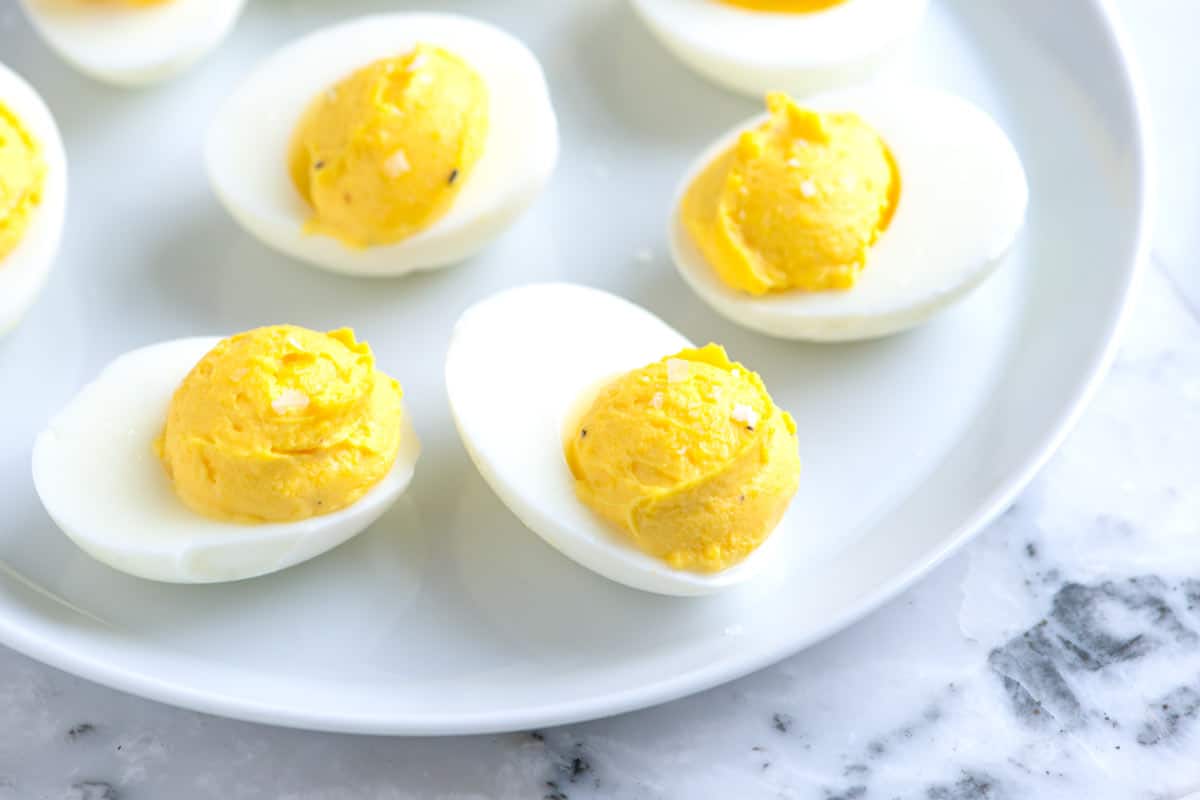
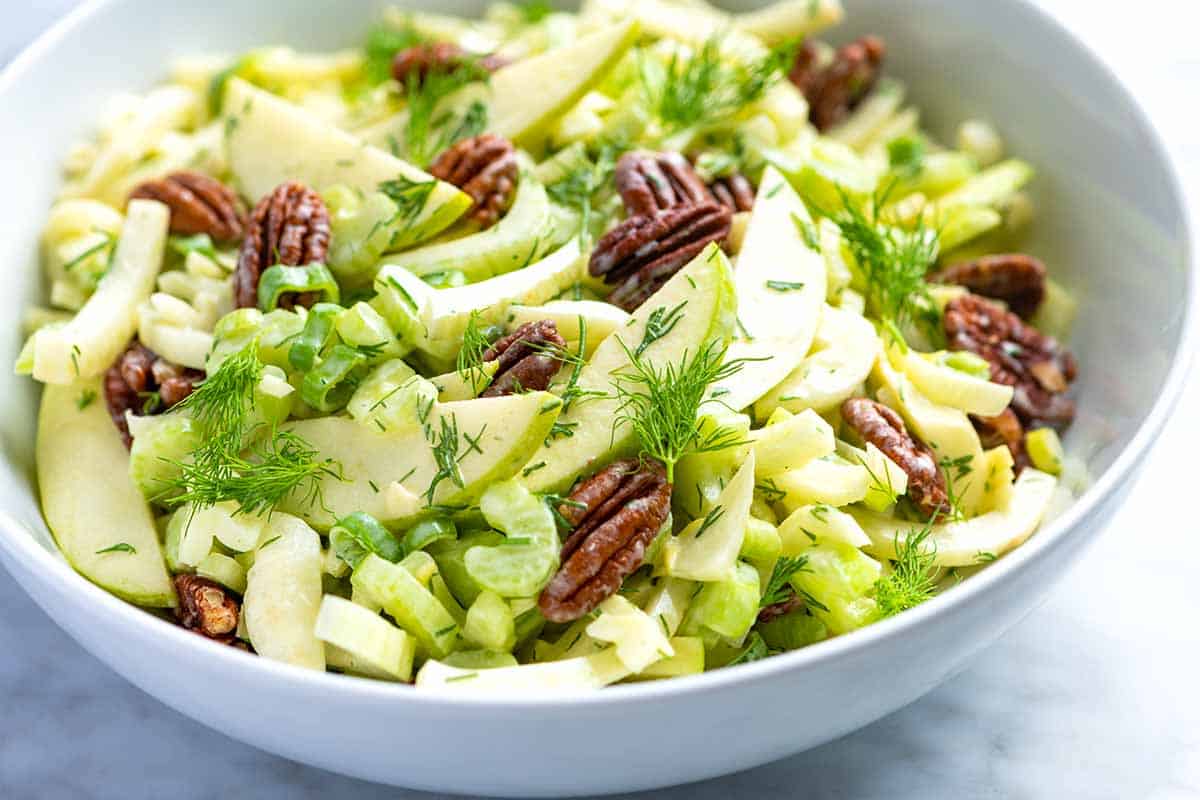



I’ve been making this every 2 weeks for a year now!! I also chop up a little horseradish too. Thanks again!!
I used olive oil bc I do not use seed oils. The olive oil flavor was alittle strong but the creamiest was spot on. Next time I would use avacado oil or non evvo just plain olive oil which I believe has a milder taste. Also forgot to add the lemon will try that next time. I got so excite how gorgeous and creamy this came out I forgot I didn’t add the teaspoon of fresh lemon juice I had
I use mayo and mayo based dressings often but unfortunately popular brands are filled with chemicals and avocado mayo from any brand for me taste way off and nothing even close to classic mayo taste. I tried few recepies and this is the best in my opinion. I substitute oil listed to healthier option . Made it twice and very pleased with results. I used quality avocado oil and pasture raised egg. This oil is flavor neuitrial and non inflammatory. Olive will be too bitter from my experience. Stays fresh in a fridge for at least two weeks. Thank you for sharing!
I followed the recipe except I used olive oil and apple cider vinegar–absolutely amazing!
I used Avocado oil and followed this recipe, amazing!!